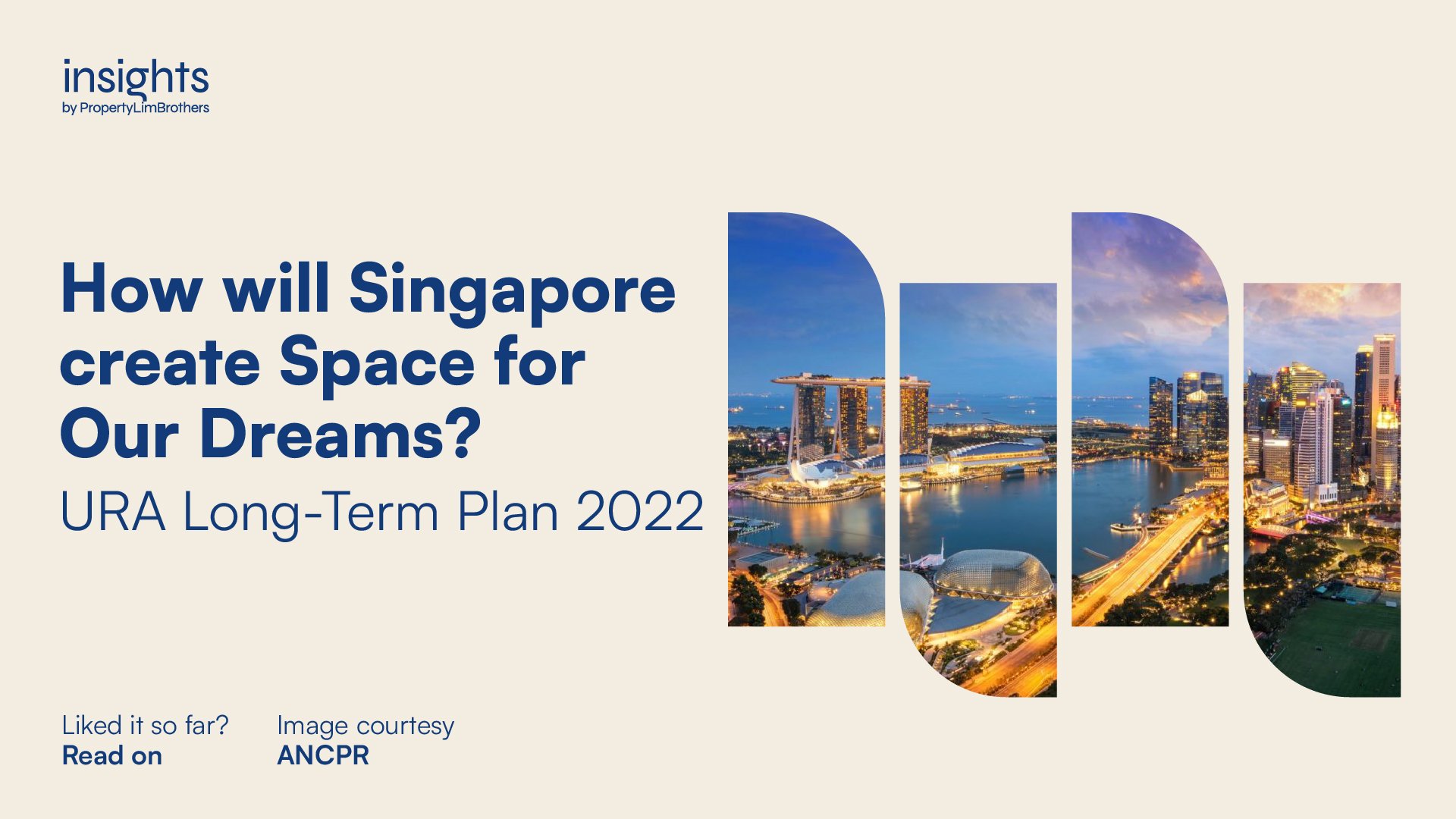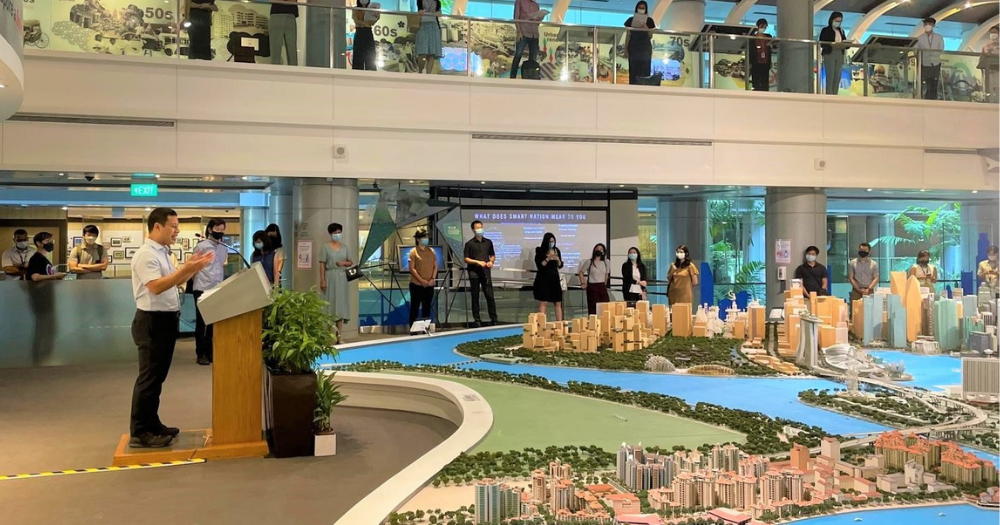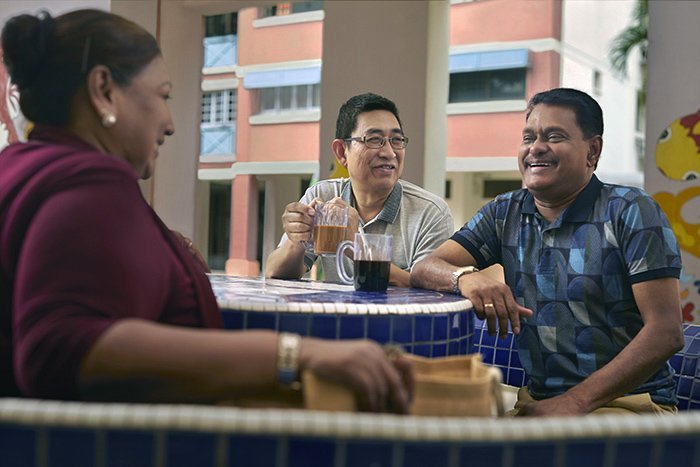
The new URA Long-Term Plan has hit it off with an exciting exhibition, “Space for Our Dreams”. It highlights important changes and upcoming shifts in the planning of land use in Singapore moving forward. An ambitious Long-Term Plan in itself is not something beyond imagination. Nor is it surprising, given the very forward-looking approach of URA and the Singaporean government.
Many things can change in the span of 50 years. Singapore has come a long way. But in order to continue forging the path forward, we will need to have our eyes up-front and focus on a new way of progressing and developing our small city-state. What has brought us this far might not continue to bring us to where we want to be in the future.
That is what the URA Long-Term Plan is for. A game plan moving forward into the future. The 50-year plan, which is reviewed every 10 years, will have 7 areas of focus. Chiefly, the plans revolve around living, working, playing, moving, cherishing, stewarding, and sustaining. There is also a special feature for Paya Lebar Air Base.
News outlets are churning out more information on the URA Long-Term Plan faster than the public can digest. The goal of this article series is to go in-depth into each of these 7 areas of focus and be the mental probiotic to help you digest all the information on the URA Long-Term Plan. In this particular introductory piece, we will cover the broad stroke of how URA plans to create the space needed for our Singaporean Dream to thrive.
What Motivates the Long-Term Plan? URA and Singaporean Society

Image courtesy Mothership
Let us examine the big picture to give us more clarity on the purposes of the Long-Term Plan and to contextualise the plan within contemporary Singapore. URA is ultimately an arm of the Ministry of National Development. The URA is tasked with urban planning. It has a strong people-focus and long-term approach to city planning.
Policy-making in the URA is thus slightly different from what we are used to. Singapore is famed for its modern economic focus and evidence-based policy decisions. While generally successful, no policy move is ever perfect. Singaporean society today faces some key issues that still need to be addressed from a policy angle.
What motivates the URA Long-Term Plan? How does it aim to improve the lives of the people who live in Singapore? The answer to these questions lies in the problems that typically populate social and political discourse. Even if they are not at the top of your mind, they should be familiar problems that pop up every now and then in the news or discussions with your opinionated friends.
In this decade, three prominent topics dominate the discourse. Social inclusion, sustainability, and mental wellness. These are the top concerns on the societal, environmental, and individual levels respectively. While we are not making a complete social commentary on this, it might be useful to expand a little bit on what these issues are.

Image courtesy Christian Science Monitor
Social inclusion in the discourse has focused on topics such as elitism, classism, privilege, nationality, discrimination, and the pitfalls of meritocracy. Social inclusion also goes along the lines of race, socioeconomic status, age, religion, gender, political affiliation, and basically any way you can substantially label or categorise a person. Given some high-profile stories on the news and social media, it is definitely not a concern that can be dismissed in contemporary society.
Environmental concerns have also been a pressing issue. With the younger generation taking great ownership of the problem, many are making significant lifestyle changes to contribute to a greener and bluer planet. Organisations (both public and private, profit and non-profit) are picking up the pace on integrating these societal concerns into their business models and practices. The Singaporean government has also made a huge commitment to the global community to go net-zero on emissions by mid-century.
Mental wellness has been an ongoing concern. Social and medical infrastructure to improve the well-being of residents is being improved incrementally. From students, and workers, to the elderly, the mental wellness of people living in Singapore has not received as much attention as now. Still, some have remarked that the current level of effort on this front is lacking, arguing that the approach to mental wellness has been more of window-dressing than serious action. We choose to take a more conservative stance, that plans to improve this are in motion, and results would not be observable overnight. The point is, that we can always do more. Enough never seems to be enough.
Each of these issues is, in its own right, tremendously complex and delicate. It is no surprise that the government is taking a multi-prong approach to alleviating these concerns. If you pay careful attention to the URA Long-Term Plan, you will notice that these concerns are weaved into their plans. They are making an attempt to address societal concerns from the perspective of urban planning, addressing them through the use of space and the way it is organised.
We see the Long-Term Plan as the government’s way to address these societal issues. In an attempt to improve the lives of those residing in Singapore, deep and serious thinking seems to have gone into the planning process to address each of the above-mentioned concerns.
From Planning to Impact — How will the Long-Term Plan pan out?

Image courtesy Mothership
With big ambitions, and big issues to overcome, how does URA’s Long-Term Plan take us one step closer to creating a conducive environment for residents? Going from planning to impact is a huge leap. There are many steps in-between before we can realise any of these dreams. A plan is, after all, just a plan. That is the biggest caveat with the URA Long-Term Plan. Certain aspects might change and some features may not materialise.
Nonetheless, the societal issues to be addressed remain a constant. And perhaps a guide for however the Long-Term Plan may evolve. Let us take a look at the Long-Term Plan as it is for now. The seven areas of focus consist of the following. The creation of more living spaces that are inclusive, future-ready, mixed-use, and diverse. The provision of more flexible workspaces that are integrated with nature and recreation, and re-designed mixed-use industrial estates. The integration of more recreational spaces near homes, with more green and blue natural space. The improvement of transport, logistics and recreational mobility infrastructure. The preservation of cultural, communal, and historical spaces for national identity and public appreciation. The stewardship of natural spaces and integrating nature into urban areas for climate resilience. The sustainable planning and development of new spaces through land reclamation, decarbonising and diversifying energy sources.
That was a mouthful. And probably impossible to cover in detail within a short article. We will instead have an article elaborating on each of these thrusts. It is more than just levelling up all the current infrastructure. Urban planning is delicate in the sense that it will be cast in stone (literally) for decades, if not close to a century. The planning process must be robust, thorough, intentional, and consultative. This is to make sure that the plans correspond to the actual needs and wants of the residents.
Needless to say, it is a difficult task. But perhaps, not at all a thankless one. Residents and real estate agents alike look forward to every URA release. Be it the performance of the market or the new plans to be released, there seems to be a very positive response to URA on that front. In some sense, each URA Long-Term Plan brings with it good news to property owners. Removal of amenities and negative news is rare. The Long-Term Plan usually announces the opposite. New infrastructure, amenities, hub status. These are boons to property prices and also the quality of life for people staying rather than investing.
We will also dedicate an article or two to the tangibility of URA Long-Term Plan. What is likely to materialise and what isn’t? What kind of factors weigh into URA decisions to write off certain parts of the plans? These are the topics we will explore as well.
In the end, long-term plans such as the URA Long-Term Plan takes time to pan out. When we talk about impact, we really are talking about decades into the future. As much as we are trying to make Singapore “Future-Ready”, the new features in our city-state may only come just on time. Who knows how much of our island will be underwater by 2050?
What do the 7 areas of focus have in common?

Image courtesy HDB
Seven areas in total really make it difficult to grasp the essence of the plan. Living, working, playing, moving, cherishing, stewarding, and sustaining are all distinct activities but the solutions to future-proof these parts of our lives have some things in common. We sum up 3 main approaches throughout these different aspects.
Integration. Integration. Integration. This word pops up a lot throughout the entire Long-Term Plan. There is integration between work, residence, retail, nature, industrial, recreational, and more. Integration in the Long-Term Plan is intricate. It is an intentional mix and match of uses to make different activities more interconnected (without having to travel far between them). Most people have been enjoying working from home. Imagine if your office is in the same building as your residence, you don’t have to spend more than 5 minutes to get there. After work, you might want to hit the gym or go for a walk in the park. 5 minutes. Need to go shopping for something? 5 minutes.
Integration might not solve all the problems but it will reduce transit time, make life more convenient, and make life in neighbourhoods more self-sufficient and exciting. Integration is also planned on the level of private-public housing. Neighbourhoods of the future will be a diverse mix of different classes of wealth. This is an attempt at fostering more social encounters between different parts of Singaporean society. Ideas of elitism and social exclusion form when we are in our own bubbles. Having a lack of diversity contributes to the formation of extreme ideologies. This might actually be a good solution to sowing some empathy into people of all socioeconomic backgrounds.
The second commonality among all 7 areas of focus is sustainability. This directly addresses the key environmental concerns. The Long-Term Plan puts out concretely how they are planning to address this. Across the island, green and blue spaces will be preserved. Defragmentation of the natural spaces will allow for biodiversity to thrive. At the same time, the public will have access to more of these spaces, hopefully fostering a deeper understanding and appreciation of nature. Climate resilience is also a huge part of the future-ready plan. In case water levels or temperature rise to an unsavoury level, there are measures planned to mitigate those effects. Preventive measures are also being implemented by the development of carbon-neutral buildings and alternative energy sources, which will aid in reaching the net-zero emissions goal. The Singaporean government is taking the issue of climate risks seriously, and so should we.
The last main approach is the focus on play and recreation in the development plans. This is more of a pre-emptive approach to mental wellness in Singapore. While factors like culture, work, and family are important in affecting mental wellness, we temporarily put them aside now to purely discuss areas for play. In general, the idea behind play and recreation is to reduce stress levels. A popular saying like “work hard, play hard” is probably what they’re going at here. By creating more areas for play & new attractions (and making them more accessible), more opportunities are available for people to unwind. This move is coupled with community, nature, arts and culture to give a more diverse and dynamic environment for recreation. Hopefully, the Singapore of the future will not have people complaining that there is nothing to do on this island.
Closing Thoughts
We are excited to cover the many things the URA Long-Term Plan 2022 has to offer. How will Singapore create Space for the Dreams of our future? Look forward to our article series on the Long-Term Plan to find out more!
If you can’t wait to know the entire story, talk to any one of our experts here. Find how the new Long-Term Plan will affect you and your family. Last but not least, how it might affect your property journey moving forward into the future.








